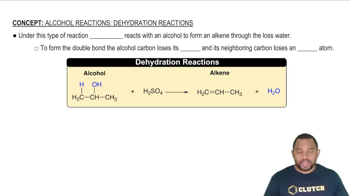Textbook Question
What is the molecularity of each of the following elementary reactions? Write the rate law for each. (c) NO(g) + Cl2(g) → NOCl2(g)
 Verified step by step guidance
Verified step by step guidance



What is the molecularity of each of the following elementary reactions? Write the rate law for each. (c) NO(g) + Cl2(g) → NOCl2(g)
What is the molecularity of each of the following elementary reactions? Write the rate law for each.
(a) 2 NO(g) → N2O2(g)
(c) SO3(g) → SO2(g) + O(g)
What is the molecularity of each of the following elementary reactions? Write the rate law for each. (b)
(c) Which step is the fastest?
Consider the following energy profile.
(a) How many elementary reactions are in the reaction mechanism?
Consider the following energy profile.
(b) How many intermediates are formed in the reaction?